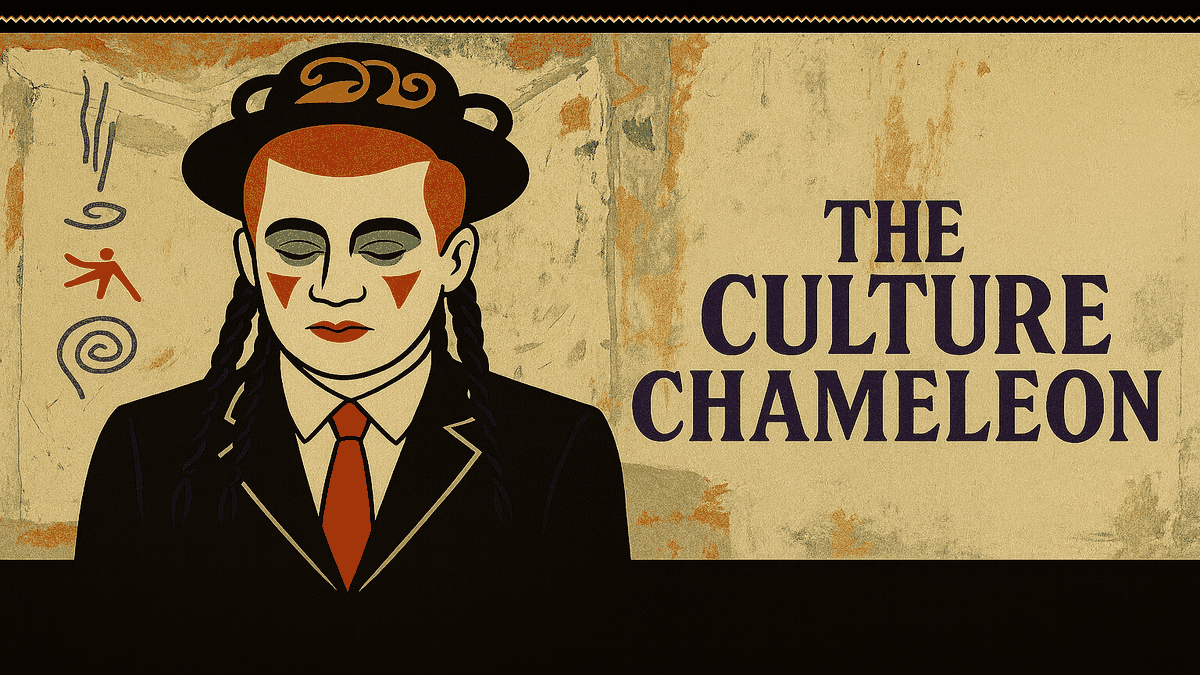The Culture Chameleon: Why Colour-Changing Organisations Eventually Face the Consequences
Organisations today are under more scrutiny than ever, and many respond by behaving like a culture chameleon—shifting their public colours to fit each new trend, audience or pressure point. Yet behind the polished brand stories, values-driven campaigns and purposeful PR statements, the internal reality often tells a different story. When an organisation changes colours too frequently—adapting its identity, values and cultural messaging to whatever is “on trend”—a contradiction forms. And as Boy George hinted in Karma Chameleon, contradictions always carry consequences.
This article explores how inconsistent organisational identity creates cultural and reputational risks, why colour-changing companies eventually face their own karma, and how internal communicators can help anchor a more authentic culture. Along the way, it examines BrewDog as a vivid modern example while weaving in echoes from Uber, Wells Fargo, Boeing and WeWork—each a reminder of what happens when the story told externally no longer matches the reality within.
Understanding the Culture Chameleon Effect
The culture chameleon effect occurs when an organisation adapts its tone, values, or identity depending on who is watching. Instead of evolving naturally, it shape-shifts strategically: green for sustainability awards, rainbow-bright for Pride Month, human-centred during recruitment season, then something entirely different behind closed doors.
This isn’t cultural growth.
It’s identity inflation—a brand expanding far beyond the culture that supports it.
These colour-changing behaviours create a widening gap between what an organisation says and what it does. Research shows that employees evaluate authenticity not through rhetoric but through lived experience (Kim, Newman & Park 2022). When behaviour contradicts message, trust erodes rapidly. What follows is silence, cynicism and a subtle withdrawal of discretionary effort—the early signs of cultural decline.
At this point, even the most sophisticated communications cannot save the narrative. As we often remind clients in our internal communication solutions at NewZapp, no technology or channel mix can compensate for a message misaligned with reality.
How the Culture Chameleon Exhausts Its Own People
The internal consequences of being a culture chameleon are rarely immediate, but they are always cumulative.
Employees begin to feel they are living inside a corporate contradiction. They’re asked to promote values they don’t experience, describe a culture that only appears on posters, and repeat a narrative that shifts as often as the brand guidelines.
This is not simply tiring—it is psychologically expensive.
Research links organisational hypocrisy and value misalignment to burnout, moral injury and emotional exhaustion (Bianchi et al., 2019; Johnson & Hall, 2021). Staff feel complicit in maintaining a story they know doesn’t quite hold. Internal communicators, in particular, sense the tension first: strained manager briefings, awkward employee Q&As, and messages that require too much “positioning” to land comfortably.
When a corporate narrative drifts from reality, communicators become the human buffers absorbing the emotional cost. That cost accumulates quietly—until eventually it becomes culture.
BrewDog: A Modern Culture Chameleon Story
Few contemporary examples illuminate the culture chameleon phenomenon like BrewDog.
The bright public colours
For years, BrewDog presented itself as a bold, rebellious, values-driven brand. It championed transparency, sustainability, punk independence and “people-first” ideals. The narrative was magnetic—disruptive, defiant, different. Audiences loved it. Investors loved it. Awards followed freely.
The muted internal colours
In June 2021, however, an open letter from over 60 former employees—Punks With Purpose—told a starkly different story. They described a workplace marked by anxiety, pressure, inconsistent leadership and public shaming. They accused the company of creating a “culture of fear” and claimed that BrewDog’s values had become a PR façade.
Where the brand painted itself in bright ethical colours, staff described experiences that felt far more bruised.
When the colours clashed
The open letter exploded across global media. The speed of reputational shift was extraordinary: one moment admired, the next interrogated. Stakeholders began re-evaluating the brand. Employees expressed relief that the contradiction had finally surfaced. Investors demanded answers.
This was classic culture chameleon karma: an organisational identity stretched so far outward that its inner reality snapped into public view.
The lesson is not that BrewDog was uniquely flawed. The lesson is that contradictions always surface. They may stay hidden for months, even years, but when internal culture and external identity drift too far apart, exposure becomes inevitable.
Echoes Across the Corporate Landscape
While BrewDog provides a dramatic illustration, the culture chameleon phenomenon extends far beyond one brand.
Uber’s 2017 cultural crisis revealed a company claiming meritocracy and innovation while internally tolerating harassment and retaliation. Wells Fargo positioned itself as a trust-focused retail bank even as pressure-driven sales practices led to millions of fake accounts. Boeing’s “safety first” identity was challenged when internal messages revealed unresolved concerns around the 737 MAX. WeWork championed wellness and community yet internally embodied overwork and founder-driven chaos.
Each case reflects a colour-changing organisation whose public identity outpaced its internal culture.
Each faced cultural karma when the contradiction became visible.
These stories reinforce why consistent, authentic communication matters—and why internal communicators must play a central role in reconnecting behaviour with narrative.
Why Colour-Changing Organisations Lose Trust
The culture chameleon effect damages trust for three reasons.
First, employees expect consistency. When leadership messaging contradicts their experience, they do not question themselves—they question the organisation. Engagement drops because engagement requires belief.
Second, the modern environment is hypertransparent. Social channels, review platforms, leaked memos and employee networks make internal contradictions visible externally. Reputational researchers confirm that inconsistencies travel faster now than at any other time in organisational history (He & Harris, 2022).
And third, trust is no longer based on promises—it is based on alignment. When words and actions match, trust compounds. When they diverge, trust collapses.
This is why internal communicators must move beyond message delivery toward narrative integrity. Tools such as NewZapp’s analytics and reporting can help track employee sentiment and detect when engagement begins to slip—often the first indicator that a cultural contradiction is forming.
Anchoring Authenticity: How Communicators Prevent the Culture Chameleon Problem
Internal communicators can dramatically reduce the risk of becoming a culture chameleon by anchoring the organisation in narrative consistency, behavioural alignment and honest listening. These approaches work not because they chase trends, but because they reinforce truth.
Building a narrative that doesn’t need reinvention
Strong cultures begin with a story rooted in purpose—not in marketing cycles. When communicators co-create a narrative grounded in authentic organisational identity, it becomes a stabilising force. Leaders rely on it in moments of pressure. Employees recognise it because it mirrors their lived experience. And the organisation stops shifting colours so quickly because it finally knows which colours are truly its own.
NewZapp’s storytelling and messaging resources can support communicators in developing a narrative that holds steady even as the environment changes.
Aligning leadership behaviour with leadership messaging
Behaviour is the most powerful form of communication. Communicators who support leaders in being transparent, consistent and accountable reduce the gap between message and reality. When actions reinforce narrative, employees no longer feel they must interpret contradictions. Instead, communication feels congruent and emotionally safe.
Leadership alignment is a behavioural intervention first and a communication practice second—and it is the clearest antidote to corporate chameleon behaviour.
Listening early and listening deeply
Contradictions rarely begin loudly; they begin quietly in moments of discomfort. Communicators who build listening systems—pulse surveys, sentiment tracking, open Q&A loops—create early warning signs. This allows leaders to address drift before it becomes a rupture.
Using a platform with accessible design, inclusive delivery and measurable engagement, like NewZapp, helps organisations reach all employees, especially those who may be underserved by traditional channels.
Listening is not a passive act. It is an organisational safeguard.
The Internal Communicator’s Role in Ending the Culture Chameleon Cycle
Internal communication is not about colouring the organisation. It is about clarifying the colour it already is—and helping leaders hold steady when the temptation to change shades becomes strong.
Communicators:
- hold the mirror up
- sense misalignment early
- guide leaders back to authenticity
- keep messaging grounded in truth
- protect the narrative from overreach
- champion behaviours that match the brand
They are the organisational conscience, the pattern-spotters, the sense-makers.
They ensure the organisation doesn’t simply look good—it is good, in the ways that matter.
Conclusion: The True Colours That Build Trust
Karma Chameleon was a warning disguised as a pop song. It reminds us that living in contradiction—whether personally or organisationally—creates strain that eventually breaks through.
Organisations cannot endlessly repaint themselves. Eventually, the colours clash. The story unravels. The truth surfaces.
But organisations that anchor their culture in authenticity, align their behaviours with their values and communicate with clarity do not need to change colours. Their true colours are strong enough.
The culture chameleon never lasts.
The authentic organisation does.
Speak with us and find out more





